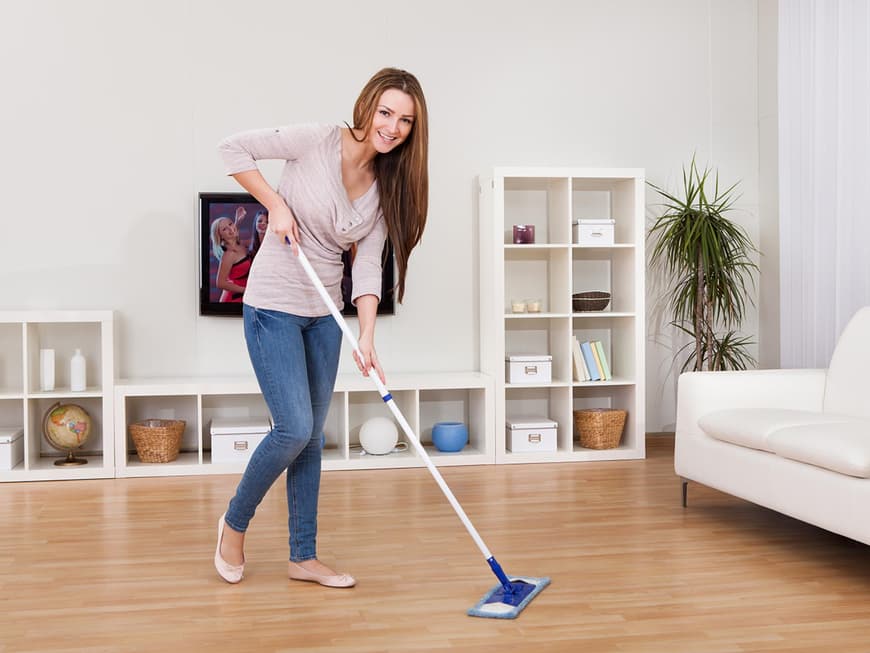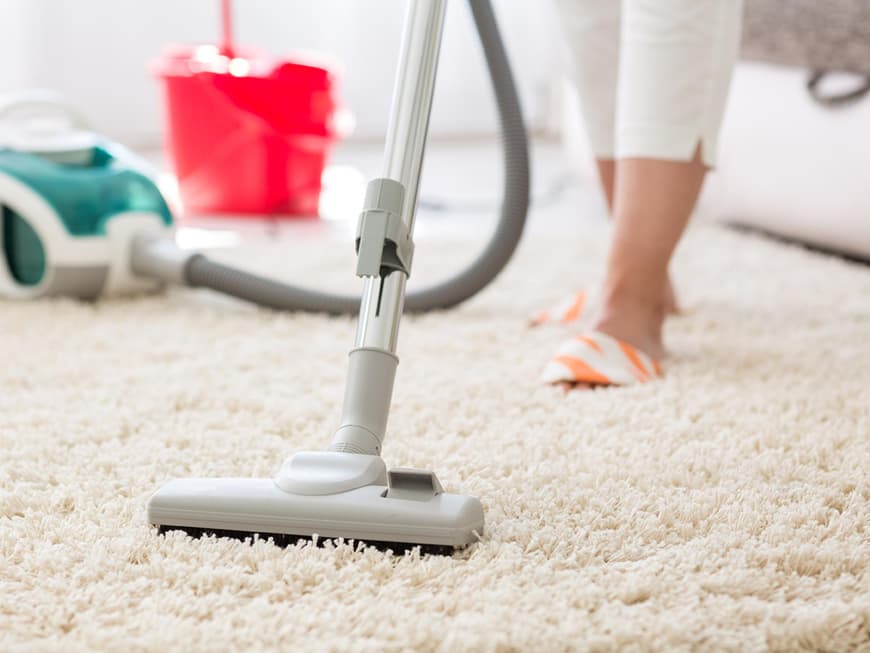Easy to clean: PVC
The material requires very little maintenance. Normally, it is sufficient to vacuum or sweep the PVC and then wipe over once with water and a little neutral cleaner. For heavy dirt, buy a cleaner with a pH value of 9 to 10 from a DIY store - it has more power. Cheaper: Mix water one to one with vinegar and use this mixture.
Simple: Laminate
Laminate flooring is also generally quick and easy to clean, just make sure it doesn't get too wet. Otherwise, the wood fibers will swell, which looks unattractive. First vacuum up the dirt, then wipe over the laminate with a mop or a damp microfiber cloth. For more cleanliness, you can simply add a little neutral or alcohol-based cleaner to the water. For heavier soiling, add a little curd soap to the water and mix well. A mild washing-up liquid is also suitable. More aggressive cleaning agents such as scouring milk and coarse, hard brushes should be avoided here and on all smooth floors. They scratch the surface.
Sensitive: natural stone
Marble or slate are great eye-catchers in the home, but not as robust as they look at first glance. Gentle agents should be used to clean natural stone, as it can hardly tolerate chemicals and is very sensitive to acids. They should therefore not be treated with vinegar. The gentlest way is to clean the floors with just water and a splash of neutral detergent. DIY stores sell a special wipe and shine care product for natural stone, which gives the material an additional protective film. Another advantage: no dirt can accumulate.
Special: Cork
This sound-absorbing covering has a very positive effect on the indoor climate. This is because cork absorbs moisture and releases it back into the environment. However, care should also be taken with cork flooring. Cork is one of those floor coverings that can only tolerate particularly gentle cleaning. If possible, it should only be vacuumed or swept thoroughly. When damp cleaning, make sure that the mop is not too wet so that the cork pieces do not swell. So here too: Always wring the cloth out very well. Use about 100 milliliters of vinegar per eight liters of water for cleaning. If the cork has been waxed or oiled, you can also use special wood floor soap. A care product based on natural resin (DIY store) acts as a kind of sealant and ensures a beautiful shine.
Practical: Tiles
Just vacuum briefly, add a splash of neutral cleaner, vinegar or lemon essence to the water, wipe over - done! Spray darkened joints with a special cleaner. Leave it to work for a short time and then scrub clean with an old toothbrush. Baking soda also lightens dark grout. Simply mix a sachet with lukewarm water to make a paste. Apply this with an old toothbrush, leave to work for a good hour and then wipe with water. It is better to avoid using scouring milk: It makes the joints crumbly.
Difficult: Wooden floorboards
Always wipe oiled floors with a damp cloth using water and white wood soap (drugstore). Lacquered planks can be treated with a product for sealed wood. Clean with a soft cotton cloth, as microfiber cloths act like sandpaper and quickly leave scratches.
Carpet cleaning: What carpets need
- When cleaning carpets, always vacuum in one direction only, as working against the grain too often damages delicate fibers.
- Apply a cleaning powder to fresh stains, brush in well with a damp scrubbing brush, leave to work for around 60 minutes and then vacuum.
- For a deep clean, soap the entire carpet with carpet shampoo once or twice a year, leave to dry and vacuum.
- To remove dried-on dirt, remove the top layer with the back of a knife and then use the dirt eraser.
You might also be interested in this:
From stove to toaster: cleaning kitchen appliances properly
4 clever cleaning tips for the oven
Cleaning the baking tray with household remedies
The cleaning plan: Why you need it and how to create it
Lemon all-rounder: cleaning agent for the whole house


